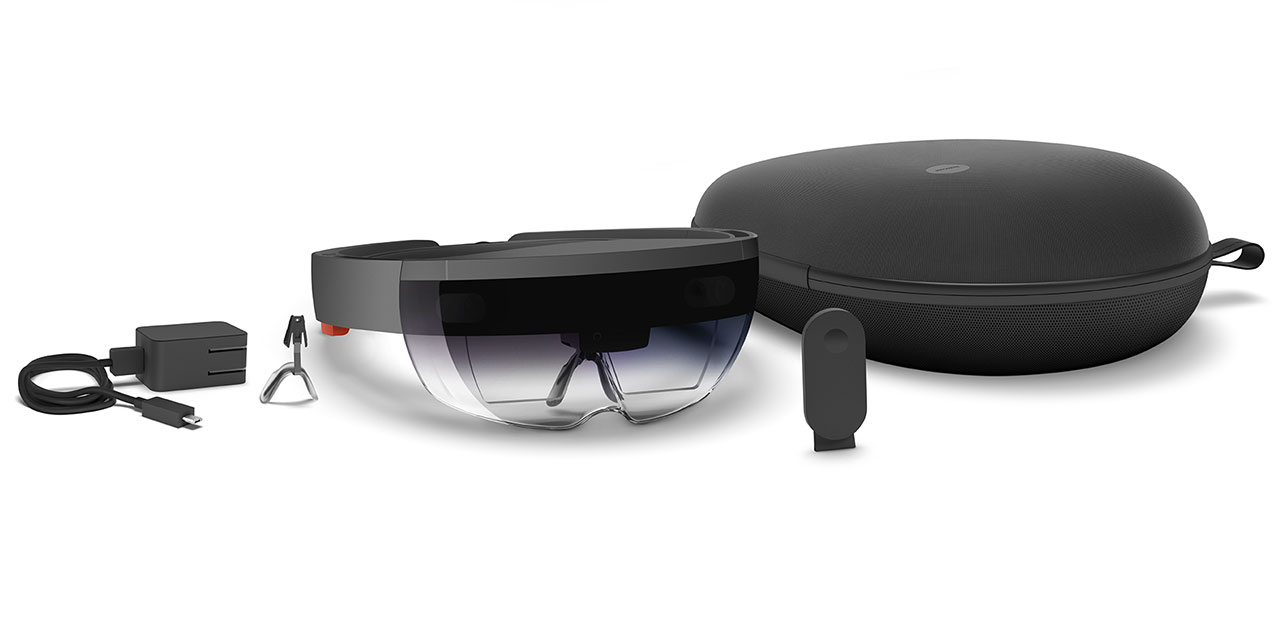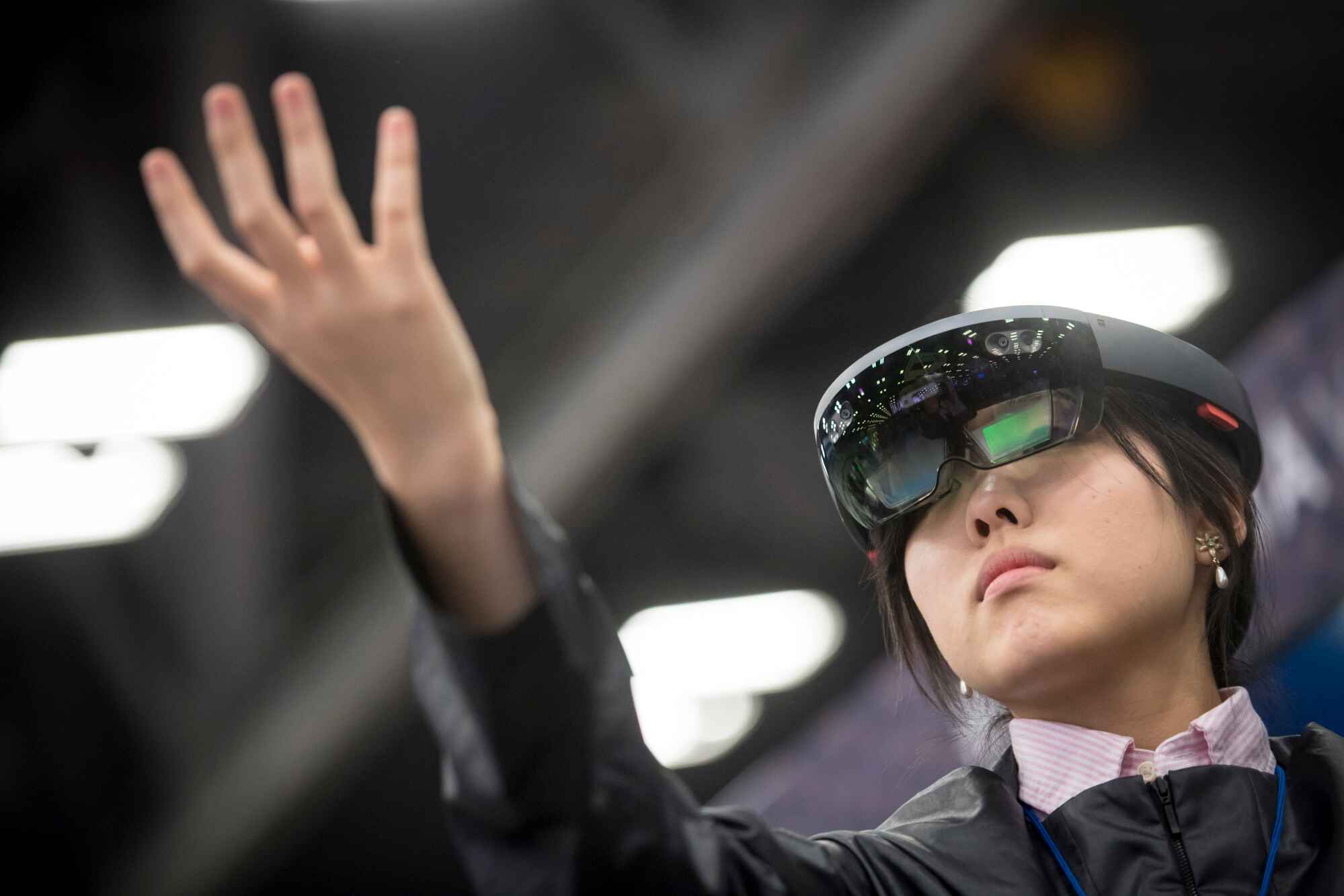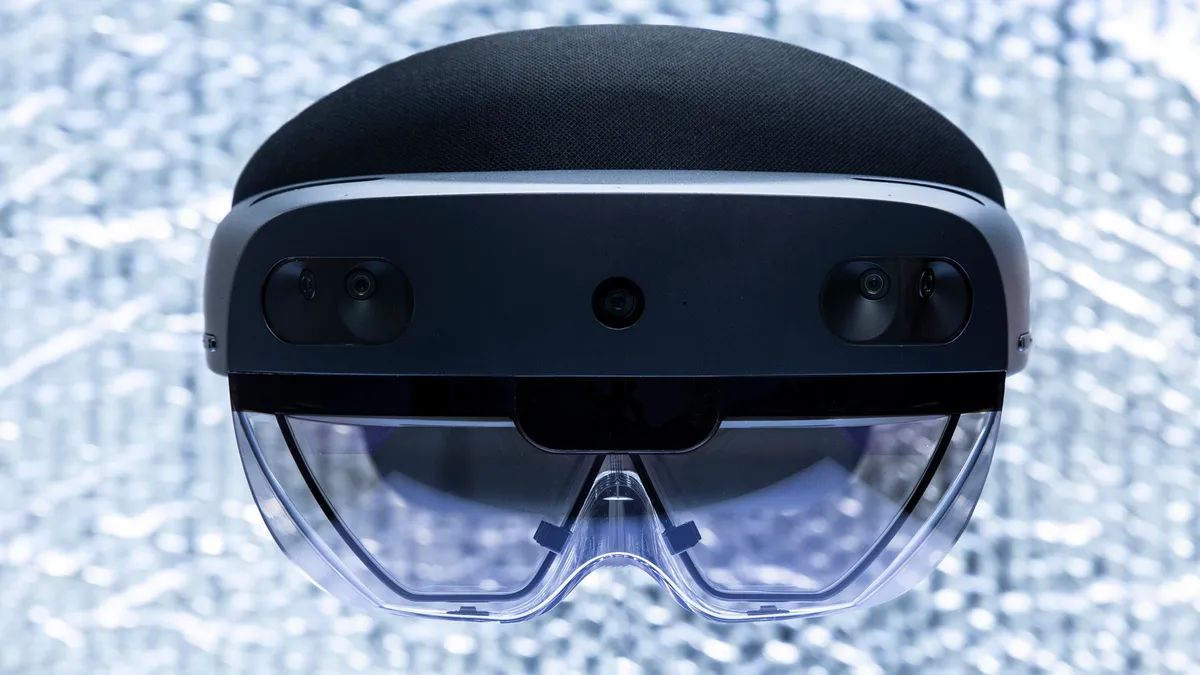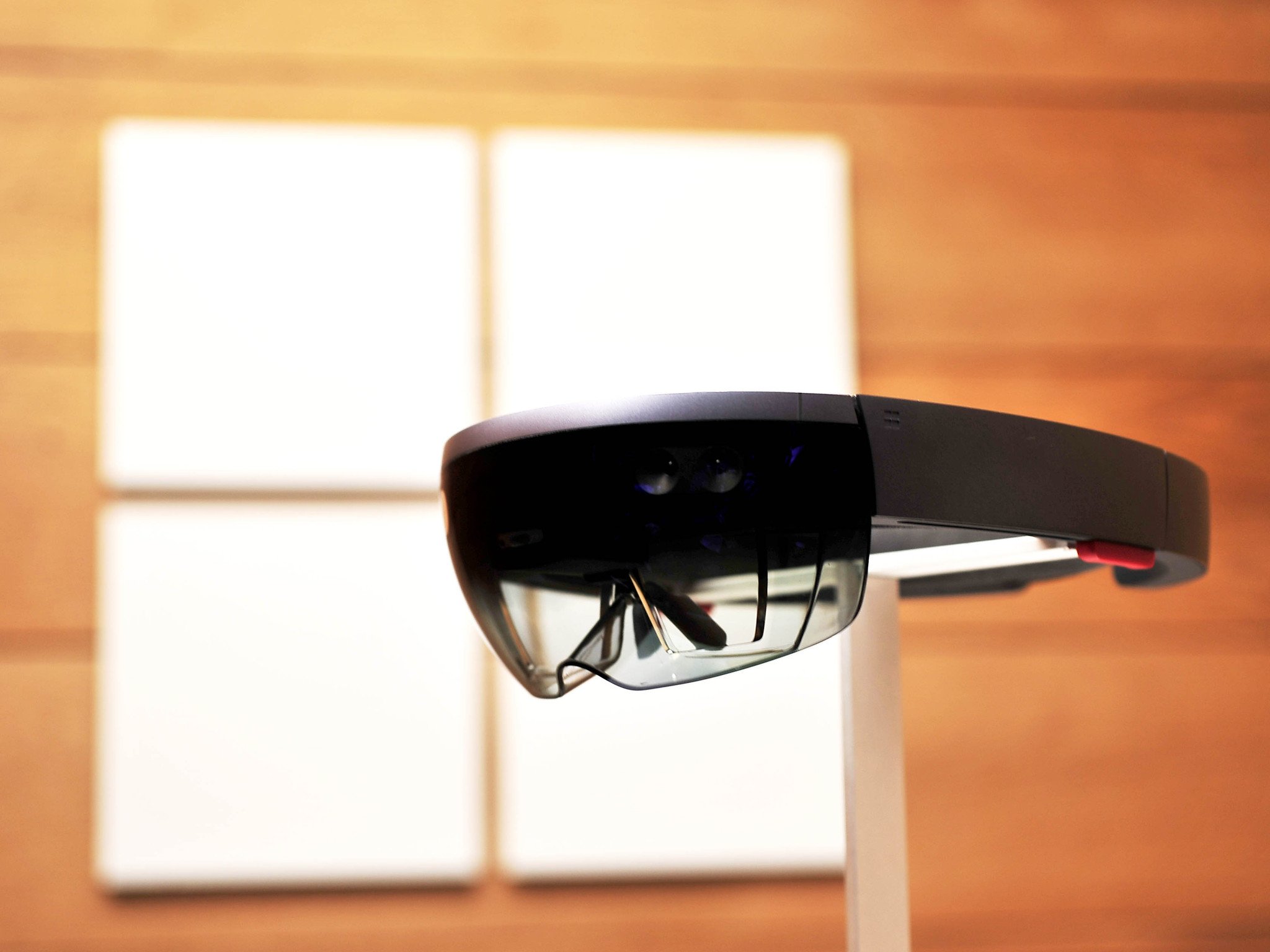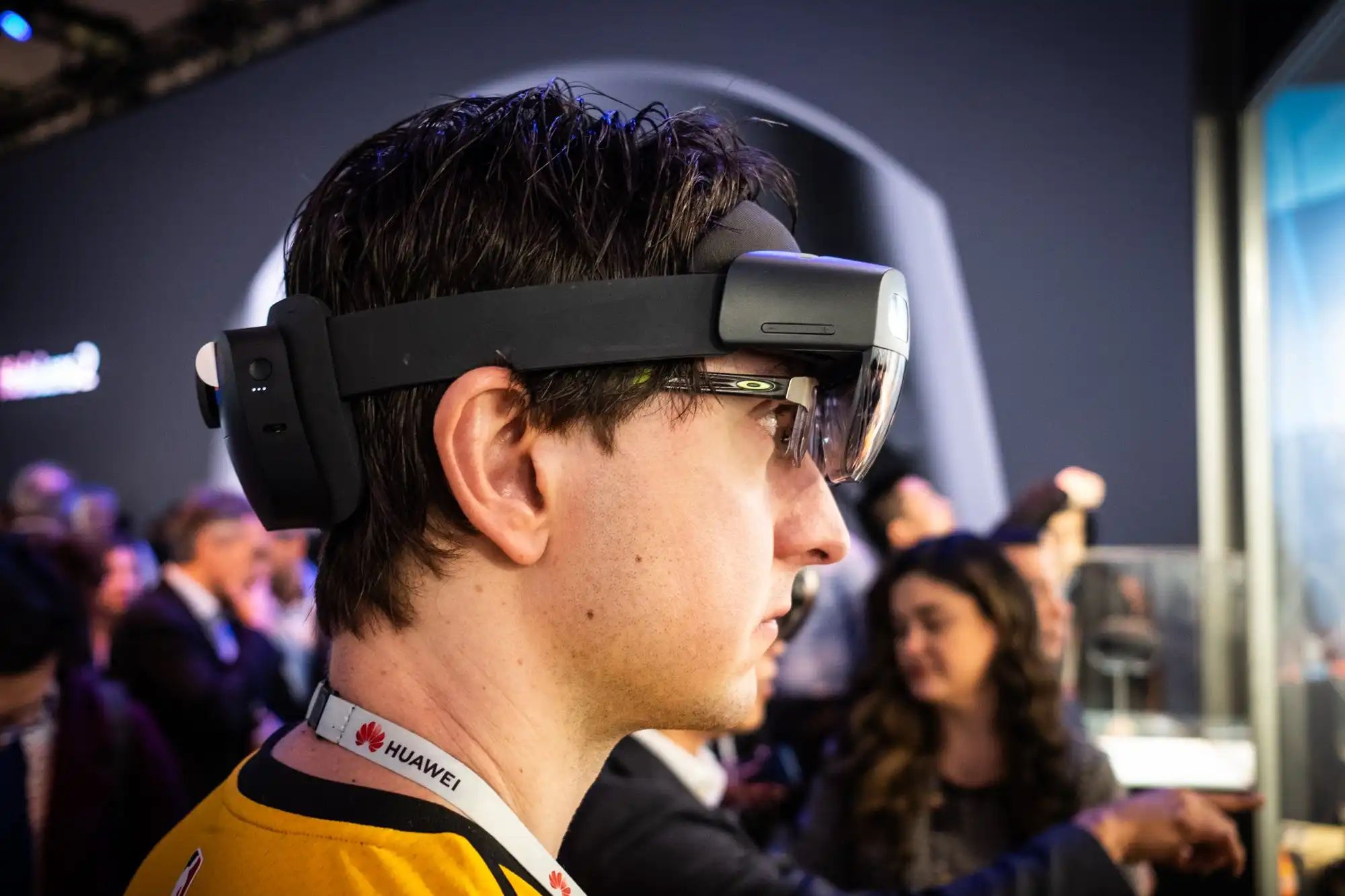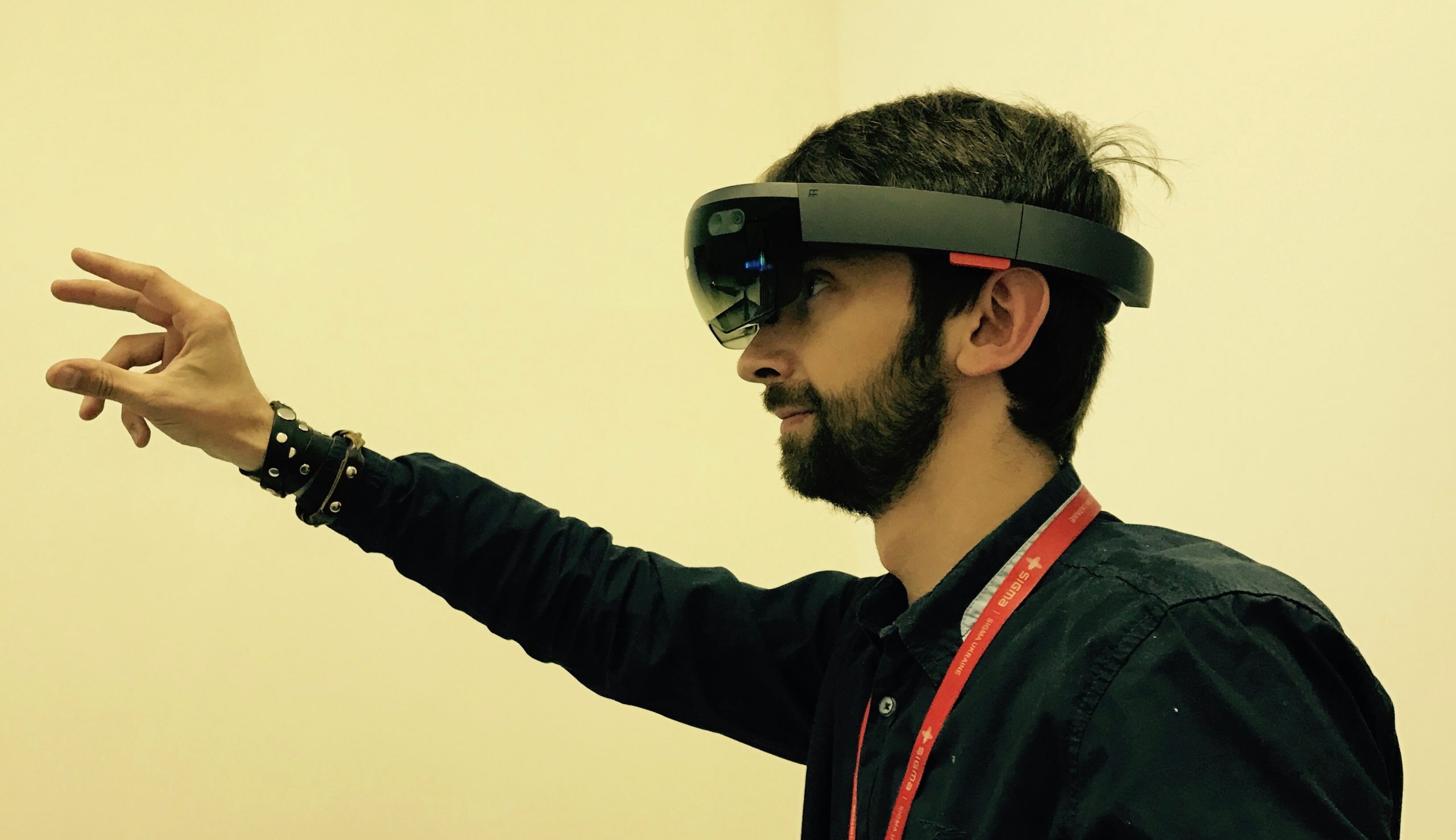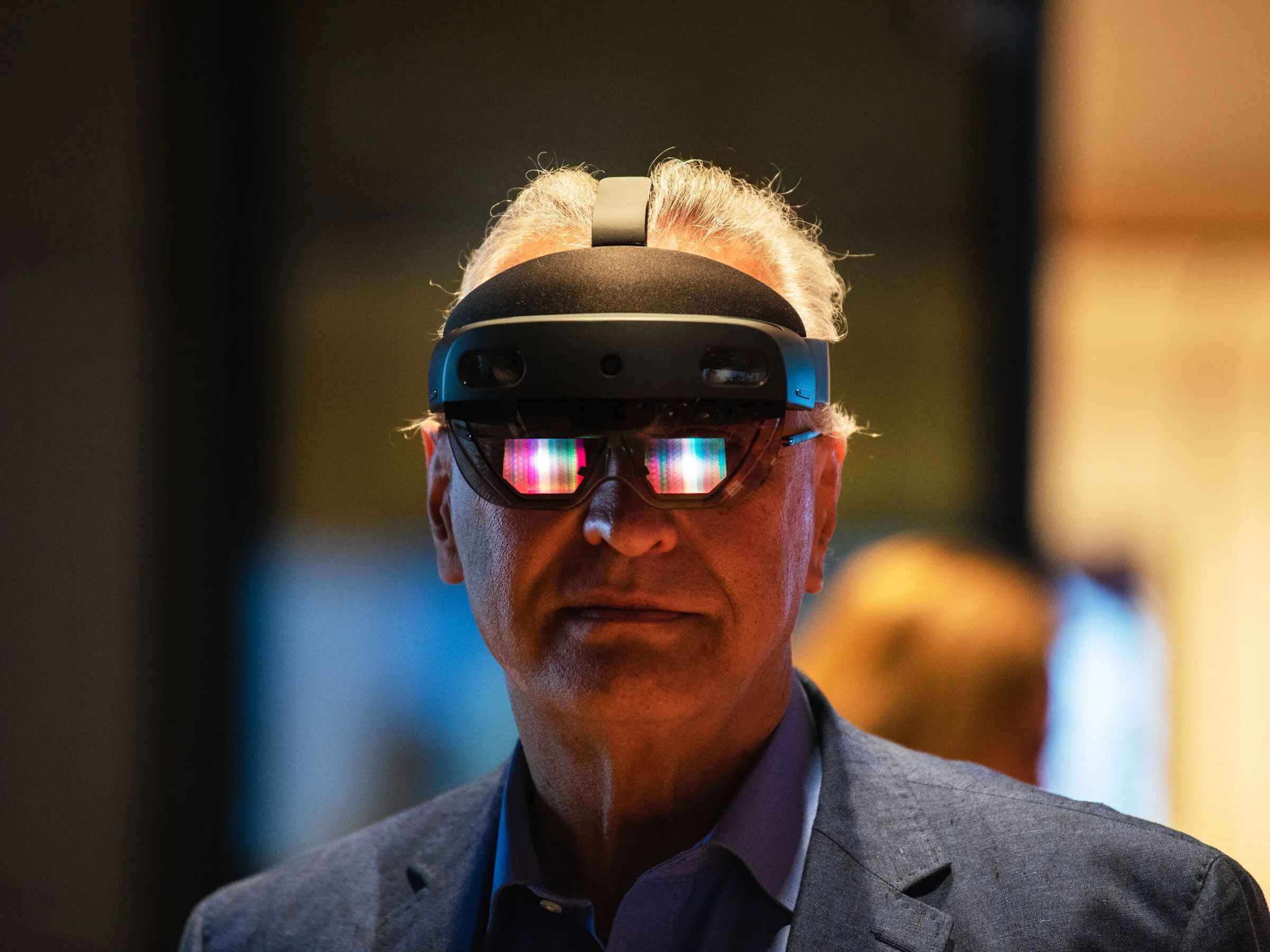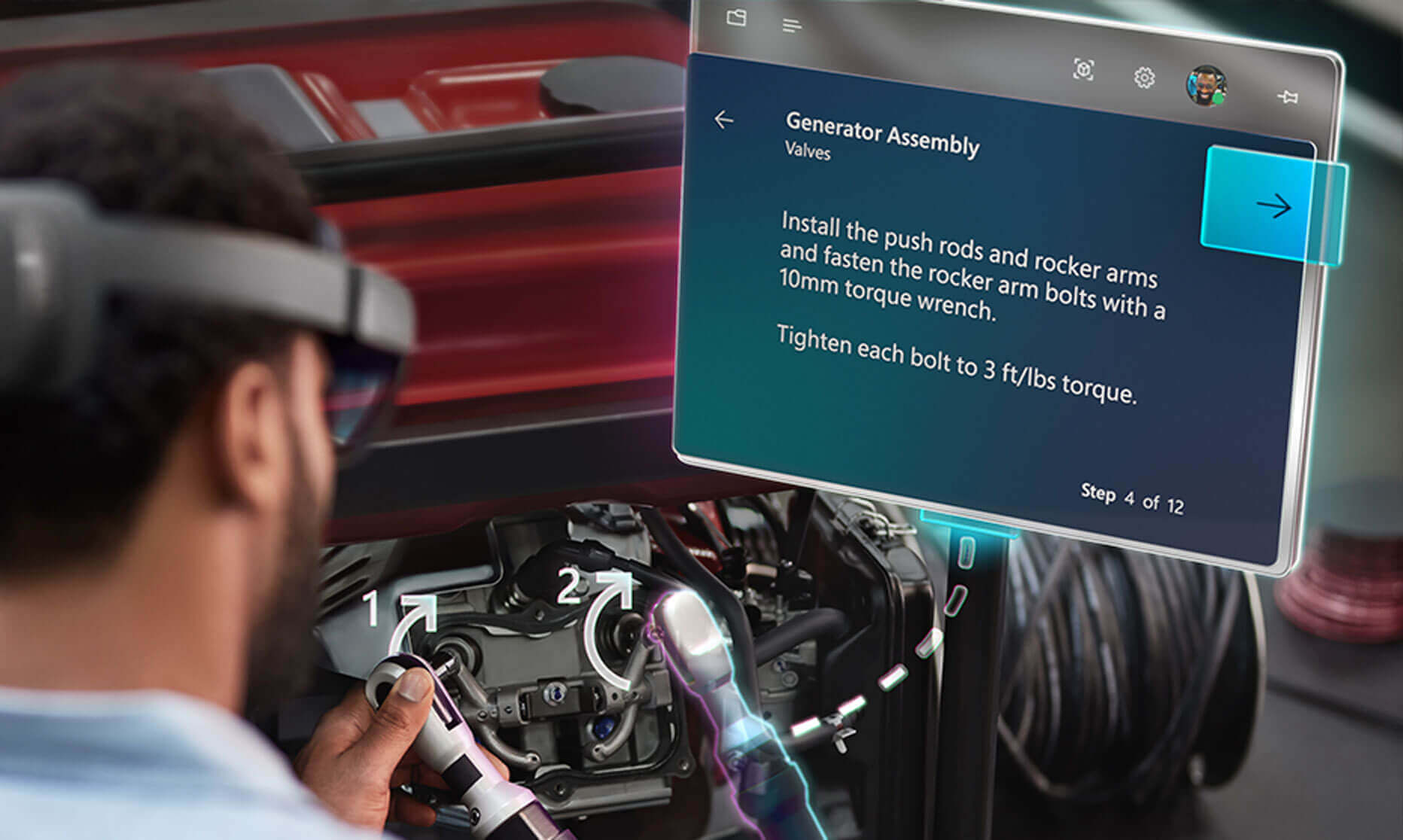Introduction
The development process of any cutting-edge technology is an intriguing journey filled with challenges, innovation, and countless hours of research and development. Microsoft’s HoloLens, a revolutionary augmented reality headset, is no exception. This article will provide an insight into the lengthy development process that HoloLens underwent before its much-anticipated release.
From conceptualization to the final product, the journey of HoloLens spans several years of meticulous planning, prototyping, and refining. The story of HoloLens development is a testament to Microsoft’s commitment to pushing the boundaries of technology and delivering groundbreaking experiences to users around the world.
Over the course of its development, HoloLens has undergone several iterations, with each version bringing significant advancements and improvements. This article will delve into the various incarnations of HoloLens and highlight the key milestones in its development timeline.
Through this exploration of HoloLens’ development, we hope to provide readers with a deeper understanding of the dedication and expertise required to bring a pioneering technology like this to fruition. So, let’s dive into the captivating story of HoloLens and discover the incredible transformation it underwent during its journey from conception to reality.
Background on HoloLens
HoloLens, developed by Microsoft, is an advanced augmented reality (AR) headset that allows users to interact with virtual objects superimposed on the real world. It was first unveiled to the public in January 2015 and has since captured the imagination of tech enthusiasts, developers, and businesses alike.
The concept of HoloLens originated from Microsoft’s research into mixed reality, which combines virtual reality and augmented reality. The goal was to create a device that seamlessly merges the digital and physical worlds, providing users with immersive experiences and countless possibilities for application.
Unlike virtual reality headsets that completely immerse users in a digital environment, HoloLens overlays holographic images onto the user’s real-world view. This unique approach enables users to interact with digital content while maintaining awareness of their surroundings.
The initial announcement of HoloLens generated immense excitement and anticipation for its potential applications. From gaming and entertainment to education, healthcare, and engineering, the possibilities seemed boundless. Developers were eager to explore the potential of this groundbreaking technology and create new experiences that could revolutionize various industries.
Microsoft recognized the significance of HoloLens and positioned it as a platform for developers to unleash their creativity and build innovative applications. Through the Windows Mixed Reality platform and tools like the HoloLens Development Edition, developers gained access to the necessary resources and support to create applications that blend the digital and physical worlds together.
As a result, an ecosystem of HoloLens applications began to grow, showcasing the practical potential of the technology. From designing complex 3D models to simulating medical procedures, HoloLens proved its versatility and usefulness in a wide range of domains.
With each version of HoloLens, Microsoft continued to refine and enhance the technology, incorporating user feedback and addressing the limitations of previous iterations. The relentless pursuit of innovation and improvement reinforced HoloLens’ position as a leading player in the augmented reality space.
Now that we have gained a broad understanding of the background and potential of HoloLens, it’s time to dive into the intriguing timeline of its development, starting from its initial version to the latest advancements.
Timeline of HoloLens Development
The development of HoloLens has been a journey spanning several years, with each version showcasing significant advancements and improvements. Let’s take a look at the timeline of HoloLens development:
- 2010: The initial groundwork for HoloLens began in 2010 when Microsoft started investing in research and development for augmented reality technologies.
- 2015: In January 2015, Microsoft unveiled the first version of HoloLens, generating significant buzz and fascination in the tech world. The Development Edition was made available to select developers, enabling them to create and explore applications for this novel device.
- 2016: The commercial release of the first version of HoloLens took place in March 2016, allowing businesses and consumers to experience the power of augmented reality firsthand. Despite being intended for developers and enthusiasts, HoloLens found applications in areas such as architecture, industrial design, and medical training.
- 2017: Building on the success of the first version, Microsoft announced the second iteration of HoloLens, known as HoloLens 2, in February 2019. This version introduced significant improvements, such as a wider field of view, enhanced hand and eye-tracking capabilities, and a more comfortable and ergonomic design.
- 2019: HoloLens 2 began shipping to select customers in November 2019, marking another milestone in the evolution of this remarkable AR headset. The improved technology and expanded features opened up new possibilities for enterprise applications, including remote collaboration, training simulations, and advanced visualization.
The timeline of HoloLens development illustrates the tireless efforts by Microsoft to push the boundaries of augmented reality technology. Each iteration brought new features and capabilities, addressing the limitations of previous versions and refining the user experience.
With a dedicated developer community and a growing list of applications across various industries, HoloLens continues to evolve and shape the future of augmented reality. This journey of innovation and progress has solidified HoloLens as a game-changing device and set the stage for further advancements in the field of mixed reality.
HoloLens Version 1
The first version of HoloLens, unveiled in 2015, marked a significant milestone in the development of augmented reality technology. This revolutionary device introduced users to the world of mixed reality, where holographic images could be seamlessly integrated into the real world.
HoloLens Version 1 featured a sleek, futuristic design that housed a complex array of sensors, cameras, and lenses. The device used a transparent visor equipped with an optical system that projected high-definition holographic images onto the wearer’s field of view. This allowed users to interact with digital content in their physical environment.
One of the key features of HoloLens Version 1 was the spatial mapping technology, which enabled the device to understand and interpret the physical surroundings. This allowed holographic images to be anchored to specific real-world objects or surfaces, creating a more immersive and believable augmented reality experience.
In terms of interaction, HoloLens Version 1 introduced gaze, gesture, and voice recognition capabilities. Users could control and manipulate holographic objects simply by looking at them, using hand gestures, or issuing voice commands. This intuitive interface made the device accessible and user-friendly.
While HoloLens Version 1 showcased the potential of augmented reality, it also had limitations. The field of view was relatively narrow, which restricted the amount of content that could be displayed at once. The device was also quite bulky and had limited battery life, making extended usage challenging.
Nevertheless, HoloLens Version 1 found applications in various industries. Architects could visualize and manipulate virtual designs within real-world spaces, medical professionals could conduct remote consultations and visualize medical data, and educators could create interactive lessons that merged the digital and physical worlds.
The first version of HoloLens served as a foundation for future iterations, providing valuable insights and user feedback to drive further innovation. Microsoft’s commitment to refining and enhancing the technology paved the way for the next advancements in augmented reality.
Now, let’s explore HoloLens Version 2 and the significant improvements it brought to the world of mixed reality.
HoloLens Version 2
HoloLens Version 2, introduced in 2019, represented a significant leap forward in the development of augmented reality technology. This iteration brought substantial improvements and addressed many of the limitations of its predecessor, setting a new standard for mixed reality experiences.
One of the most notable enhancements of HoloLens Version 2 was its wider field of view. The device featured an expanded display area, allowing users to see a larger holographic canvas within their real-world surroundings. This improvement enhanced immersion and made the holographic content feel more natural and seamless.
HoloLens Version 2 also incorporated advancements in hand and eye-tracking technology. The device was equipped with sensors that precisely tracked the movement of the user’s hands, allowing for more precise interaction with holographic objects. Additionally, eye-tracking technology enabled more intuitive and efficient navigation through content by accurately detecting the user’s gaze.
Comfort and usability were also major areas of improvement in HoloLens Version 2. The device was designed to be more lightweight and comfortable to wear for extended periods. It featured a carbon fiber build and an ergonomic headband that distributed weight evenly, reducing fatigue and improving overall user experience.
Another significant upgrade in HoloLens Version 2 was the addition of a more powerful custom-made AI chip called the Holographic Processing Unit (HPU). This dedicated chip provided enhanced performance and computational capabilities, enabling more complex and realistic holographic experiences.
HoloLens Version 2 was built with enterprise applications in mind. It introduced features such as remote collaboration and data visualization tools that proved invaluable for industries such as architecture, manufacturing, and healthcare. The device allowed remote teams to view and interact with 3D models in real-time, improving communication and collaboration regardless of geographical barriers.
With its improved technology and expanded features, HoloLens Version 2 opened up new possibilities for augmented reality in various industries. Its enhanced spatial mapping capabilities, combined with powerful tools for developers, allowed for the creation of more sophisticated and interactive holographic applications.
As the second iteration of HoloLens, Version 2 demonstrated Microsoft’s commitment to advancing the capabilities of augmented reality technology. The success and advancements of HoloLens Version 2 laid the groundwork for future iterations and solidified HoloLens’ position as a game-changing device in the realm of mixed reality.
Now, let’s explore the latest iteration of HoloLens in Version 3.
HoloLens Version 3
HoloLens Version 3, the latest iteration of Microsoft’s augmented reality headset, represents yet another significant step forward in the evolution of mixed reality experiences. Building upon the successes of its predecessors, Version 3 introduces new features and advancements that further push the boundaries of what is possible in augmented reality.
One of the key highlights of HoloLens Version 3 is the enhanced display technology. The device features improved resolution and image quality, resulting in sharper and more realistic holographic visuals. This upgrade further enhances immersion and makes virtual content seamlessly blend into the real world.
Version 3 also introduces advanced depth sensing capabilities, allowing for more precise and accurate spatial mapping. This technology enables the HoloLens to better understand and analyze the user’s environment, resulting in more convincing and interactive augmented reality experiences. The enhanced mapping capabilities open the door to a wide range of applications, from realistic object interactions to more immersive gaming experiences.
Improved hand tracking is another notable upgrade in HoloLens Version 3. The device can now track individual finger movements and gestures more accurately, providing users with a more natural and intuitive way to interact with virtual objects. This advancement unlocks new possibilities for engaging and immersive experiences, enabling users to manipulate and control digital content with greater precision.
Comfort and ergonomics have also been prioritized in Version 3, with Microsoft refining the design and weight distribution to ensure maximum comfort for prolonged use. This makes HoloLens Version 3 more accessible and convenient for enterprise applications that require extended periods of wear.
HoloLens Version 3 also brings improvements in processing power and battery life, allowing for more complex and resource-intensive applications. The increased computational capabilities enable developers to create richer and more interactive holographic experiences, pushing the boundaries of what is possible within the realm of augmented reality.
With each iteration, HoloLens has gained traction in various industries. From architecture and engineering to healthcare and education, HoloLens holds immense potential to transform how we work, create, learn, and communicate. With the improvements in Version 3, the device further solidifies its position as a versatile and powerful tool for enterprise applications.
HoloLens Version 3 embodies Microsoft’s commitment to innovation and pushing the boundaries of mixed reality technology. With its enhanced display, improved tracking, and upgraded features, it takes the immersive augmented reality experience to new heights. As we look towards the future, we can only anticipate even more groundbreaking advancements in the world of HoloLens.
HoloLens Version 4
HoloLens Version 4, the most recent iteration of Microsoft’s renowned augmented reality headset, represents another significant leap forward in the evolution of mixed reality technology. This version introduces cutting-edge features and advancements that push the boundaries of what is possible in the realm of augmented reality.
One of the key highlights of HoloLens Version 4 is the incorporation of advanced eye-tracking technology. This technology allows the device to accurately track the user’s gaze and adjust the holographic content accordingly. Users can now interact with virtual objects simply by looking at them, creating a more intuitive and immersive experience.
Version 4 also features an upgrade to the field of view, providing users with a wider and more expansive holographic canvas. This expansion allows for more content to be displayed at once, enhancing immersion and enabling more complex and detailed augmented reality experiences.
The hand tracking capabilities of HoloLens Version 4 have also undergone improvements. The device can track hand movements and gestures with exceptional precision, allowing for more natural and intuitive interactions with virtual objects. This advancement elevates the level of control and immersion, enabling users to manipulate digital content as if it were physically present.
In terms of design, HoloLens Version 4 focuses on enhancing comfort and wearability. The device is lighter, sleeker, and more ergonomic, ensuring a comfortable experience even during extended periods of use. The aim is to make HoloLens more accessible and practical for professional applications that require prolonged wear.
Version 4 of HoloLens also boasts improved processing power and battery life, enabling more advanced and intricate augmented reality experiences. This increased capability empowers developers to create more immersive and realistic holographic content, pushing the boundaries of what is possible within the realm of augmented reality.
With each iteration, HoloLens has proven its value in various industries. From design and engineering to healthcare and training, the device has revolutionized the way professionals work, learn, and collaborate. With the advancements of Version 4, HoloLens continues to solidify its position as a transformative tool for businesses and individuals alike.
As Microsoft continues to invest in research and development, future versions of HoloLens are sure to bring even more remarkable advancements. The pursuit of innovation and improvement in the field of mixed reality ensures that HoloLens will continue to push the boundaries of what is possible in augmented reality technology.
With HoloLens Version 4, Microsoft builds upon its expertise and dedication to deliver an even more immersive and powerful mixed reality experience, unlocking new possibilities for businesses, creatives, and individuals.
Conclusion
The development journey of HoloLens has been a remarkable one, filled with innovation, technological advancements, and a commitment to pushing the boundaries of augmented reality. From its initial unveiling to the latest iterations, HoloLens has continually evolved, introducing new features, refining user experiences, and finding applications in various industries.
Over the years, Microsoft has demonstrated its dedication to improving HoloLens with each version, addressing limitations, and incorporating valuable user feedback. The development of HoloLens Version 1 laid the foundation for immersive augmented reality experiences, while Version 2 brought significant improvements in field of view and ergonomics. Version 3 showcased advancements in display technology and refined user interaction, and Version 4 introduced eye-tracking technology and further improvements in comfort and design.
Through these advancements, HoloLens has found applications in diverse fields, including design, healthcare, education, and manufacturing, among others. The device has opened up new possibilities for collaboration, visualization, and problem-solving, revolutionizing how professionals approach their work.
With the continuous dedication to research and development, future versions of HoloLens are expected to further enhance the possibilities of mixed reality, offering even more immersive and dynamic experiences. Microsoft’s commitment to innovation ensures that HoloLens will continue to lead the way in the augmented reality space, pushing the boundaries and transforming the future of technology.
As the world embraces the potential of augmented reality, HoloLens remains at the forefront, demonstrating the power of blending the digital and physical worlds. The journey of HoloLens development is an inspiration, showcasing the power of human ingenuity and creativity in shaping the future of technology.
As we look ahead, we can only anticipate what remarkable advancements and groundbreaking experiences lie in store for HoloLens and the realm of augmented reality. The journey continues, and HoloLens will undoubtedly play a pivotal role in shaping the future of how we interact and engage with technology in our daily lives.







